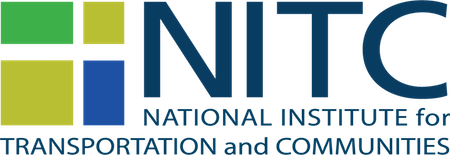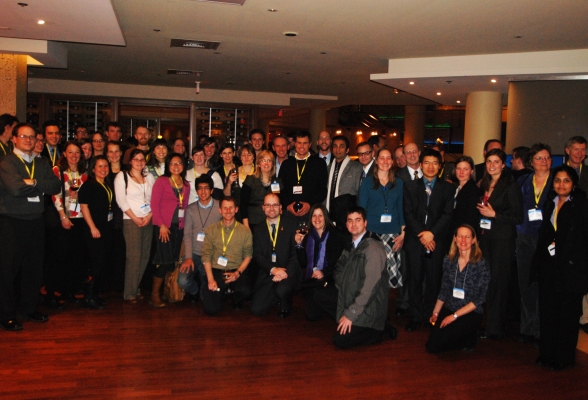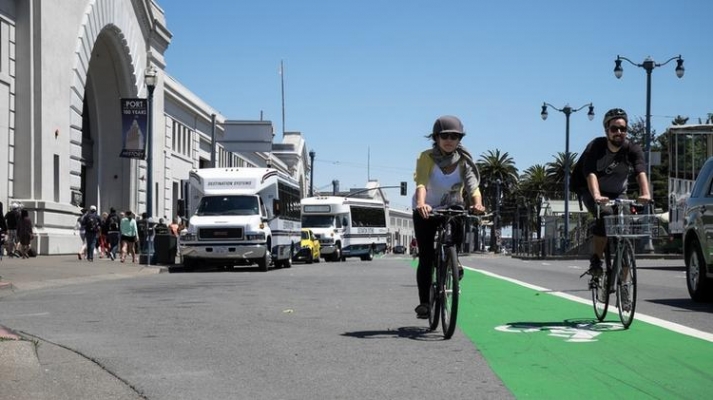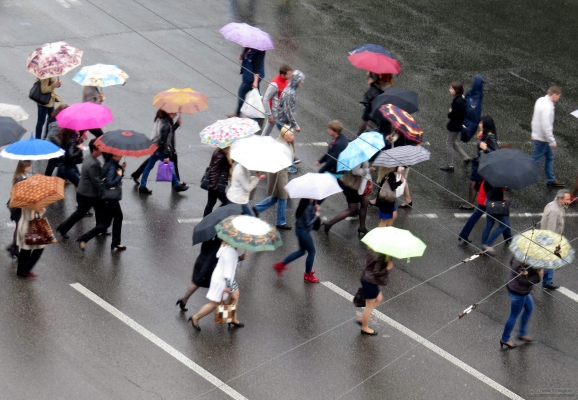If you weren’t one of the 10,000 people who attended the Transportation Research Board’s Annual Meeting in January, there are fifty students and twenty faculty for PSU, UO, OSU and OIT who can tell you what they learned there. OTREC's bright yellow lanyards made our presence especially visible! PSU student Brian Davis blogged about his experience, OTREC’s Jon Makler was interviewed in a local newspaper, and the Oregon “delegation” at the conference was covered by both local and national blogs. Team OTREC filed some daily debriefs, highlighting presentations on topics such as federal stimulus investments in Los Angeles and Vermont’s efforts to address their transportation workforce crisis with returning military veterans (as well as the...
Read moreWatch video
View slides: Bell Presentation (PDF)
Summaries:
Identification and Characterization of PM2.5 and VOC Hot Spots on Arterial Corridor by Integrating Probe Vehicle, Traffic, and Land Use Data: The purpose of this study is to explore the use of integrated probe vehicle, traffic and land use data to identify and characterize fine particulate matter (PM2.5) and volatile organic compound (VOC) hot spot locations on urban arterial corridors. An emission hot spot is defined as a fixed location along a corridor in which the mean pollutant concentrations are consistently above the 85th percentile of pollutant concentrations when considering all other locations along the corridor during the same time period. In order to collect data for this study, an electric vehicle was equipped with instruments designed to measure PM2.5 and VOC concentrations. Second-by-second measurements were performed for each pollutant from both the right and left sides of the vehicle. Detailed meteorological, traffic and land use data is also...
View Andy Kading's slides
View Patrick Singleton's slides
Watch video
Andy Kading, Graduate Student Researcher, Portland State University
Topic: Managing User Delay with a Focus on Pedestrian Operations
Across the U.S, walking trips are increasing. However, pedestrians still face significantly higher delays than motor vehicles at signalized intersections due to traditional signal timing practices of prioritizing vehicular movements. This study explores pedestrian delay reduction methods via development of a pedestrian priority algorithm that selects an operational plan favorable to pedestrian service, provided a user defined volume threshold has been met for the major street. This algorithm, along with several operational scenarios, were analyzed with VISSIM using Software-In-The-Loop (SITL) simulation to determine the impact these strategies have on user delays. One of the operational scenarios examined was that of actuating a portion of the coordinated phase, or actuated-coordinated operation. Following a discussion on platoon dispersion and the application of it in the design of actuated-coordinated signal...
Read moreWatch video
View slides
Summary: A growing concern related to large-truck crashes has increased in the State of Texas in recent years due to the potential economic impacts and level of injury severity that can be sustained. Yet, studies on large truck involved crashes highlighting the contributing factors leading to injury severity have not been conducted in detail in the State of Texas especially for its interstate system. In this study, we analyze the contributing factors related to injury severity by utilizing Texas crash data based on a discrete outcome based model which accounts for possible unobserved heterogeneity related to human, vehicle and road-environment. We estimate a random parameter logit model (i.e., mixed logit) to predict the likelihood of five standard injury severity scales commonly used in Crash Records Information System (CRIS) in Texas – fatal, incapacitating, non-incapacitating, possible, and no injury (property damage only). Estimation findings indicate that the level of injury severity outcomes is highly influenced by a number of complex interactions between factors and the effects of the some factors can vary across observations. The contributing factors include drivers’ demographics, traffic flow condition, roadway geometrics, land use and temporal...
Read moreView slides
Abstract: We propose to decompose residential self-selection by understanding its formation process. We take a life course perspective and postulate that locations experienced early in life have a lasting effect on our locational preferences in life. In other words, what was experienced spatially is a key factor contributing to our residential self-selection and our preferences in residential locations are formed long before our own self-selection begins. We further hypothesize that prior locational influence interacts with period effect such that the same location experienced in different periods may have distinct effects. Using an empirically collected dataset in the New York Metropolitan Region, we estimated a series of models to test these hypotheses. The results demonstrate that prior locational influence precedes residential self-selection. Furthermore, we show a variety-seeking behavioral pattern resulted from locations experienced during adolescence.
Watch condensed preview video
Watch full video
View slides
If you would like to receive continuing education credits such as PDH or CM, please make sure to complete this evaluation form once you've watched the entire video so that we have a record of your attendance.
Why model pedestrians?
A new predictive tool for estimating pedestrian demand has potential applications for improving walkability. By forecasting the number, location and characteristics of walking trips, this tool allows for policy-sensitive mode shifts away from automobile travel.
There is growing support to improve the quality of the walking environment and make investments to promote pedestrian travel. Despite this interest and need, current forecasting tools, particularly regional travel demand models, often fall short. To address this gap, Oregon Metro and NITC researcher Kelly Clifton worked together to develop...
Read moreWatch video
View slides
Summary: Since about 2008, the planning world has been experiencing a paradigm shift that began in places like California and Oregon that have adopted legislation requiring the linking of land use and transportation plans to outcomes, specifically to the reduction of greenhouse gases (GHGs). In response to this need, Calthorpe Associates has developed a new planning tool, called UrbanFootprint, on a fully Open Source platform (i.e. Ubuntu Linux, PostGIS, PostGreSQL, etc.). As a powerful and dynamic web and mobile-enabled geo-spatial scenario creation and modeling tool with full co-benefits analysis capacity, UrbanFootprint has great utility for urban planning and research at multiple scales, from general plans, to project assessments, to regional and state-wide scenario development and analysis. Scenario outcomes measurement modules include: a powerful ‘sketch’ transportation model that produces travel and emissions impacts; a public health analysis engine that measures land use impacts on respiratory disease, obesity, and related impacts and costs; climate-sensitive building energy and water modeling; fiscal impacts analysis; and greenhouse gas and other emissions modeling.
Bio: Garlynn Woodsong is a Project Manager in the regional and large-...



